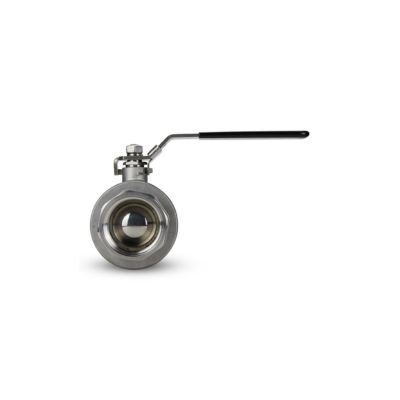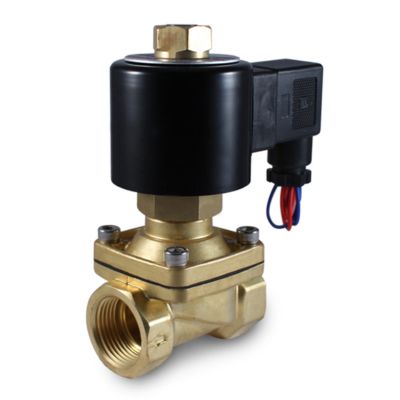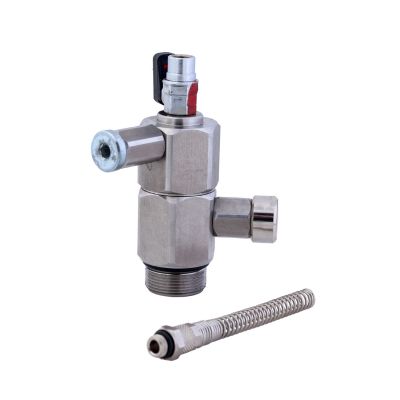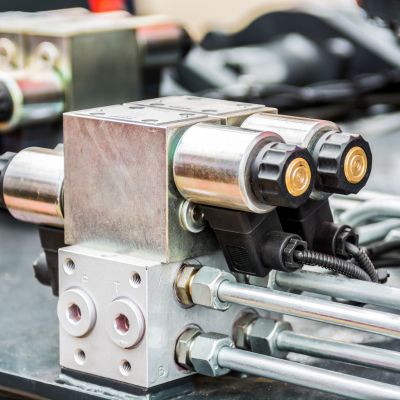Oct 14th 2024
Understanding Valve Actuation: Manual vs. Electric vs. Pneumatic vs. Hydraulic
Valve actuation is the process of opening or closing a valve. The valve actuator can be operated manually by hand or powered using electricity, compressed air, or fluid. Each type has its own pros, cons, and use cases. This post goes over each of these to help you better understand your options.
Types of Valve Actuators
Manual
 Manual actuators are operated by hand (manually). They use levers, wheels, or gears to open or close a valve. They are most often used when automation is unnecessary, in low-pressure systems, for cost-sensitive projects, or where manual intervention may be needed for safety reasons. Examples include manual ball valves, gate valves, and globe valves.
Manual actuators are operated by hand (manually). They use levers, wheels, or gears to open or close a valve. They are most often used when automation is unnecessary, in low-pressure systems, for cost-sensitive projects, or where manual intervention may be needed for safety reasons. Examples include manual ball valves, gate valves, and globe valves.
Pros
- They are the least expensive option.
- Doesn't require power like electricity, air, or hydraulics.
- Fewer parts make them less likely to break and easier to maintain.
Cons
- Requires manual effort.
- Not ideal for frequent operations.
- Cannot be operated remotely or automatically.
- Operating large valves can be physically demanding, especially in high-pressure systems.
- Limited speed and force compared to other types.
Common Applications
- Residential plumbing
- Garden irrigation
- Emergency shut-off valves
Electric
 These actuators use electricity to generate mechanical motion to open and close valves. They are recommended for applications that require precise control, automation, and/or quick opening/closing of the valve. Examples include solenoid valves and motorized ball valves.
These actuators use electricity to generate mechanical motion to open and close valves. They are recommended for applications that require precise control, automation, and/or quick opening/closing of the valve. Examples include solenoid valves and motorized ball valves.
Pros
- Can open and close the valve very quickly.
- Offers the most precision.
- Fairly easy to integrate with modern control systems for automation.
- More energy-efficient compared to pneumatic and hydraulic actuators.
- Cleaner and quieter to operate than other powered actuators.
Cons
- May overheat under heavy use.
- Due to limited force, they are not suitable for larger valves.
- Requires a consistent power source.
- Vulnerable during power outages.
Common Applications
- HVAC systems
- Automated water treatment plants
- Process control in food and beverage industries
- Pharmaceutical production
Pneumatic
 Pneumatic actuators use compressed air to drive a piston or diaphragm that moves the valve stem, opening or closing the valve. They are often installed in systems that require fast, repetitive motions like conveyor systems and automation lines. Examples include diaphragm actuators and piston actuators.
Pneumatic actuators use compressed air to drive a piston or diaphragm that moves the valve stem, opening or closing the valve. They are often installed in systems that require fast, repetitive motions like conveyor systems and automation lines. Examples include diaphragm actuators and piston actuators.
Pros
- Less expensive than electric and hydraulic actuators.
- Provides fast response and rapid movement.
- Capable of delivering high force.
Cons
- Less precise compared to electric actuators.
- Requires compressed air infrastructure
- Air leaks can reduce efficiency and increase maintenance.
- Can be noisy due to air exhaust.
Common Applications
- Conveyor systems in manufacturing plants
- Automated assembly lines in automotive production
- Packaging equipment
- Chemical plants
Hydraulic
 Hydraulic actuators use fluid (usually oil) pressure to generate force against a piston or vane that moves a valve into an open or closed position. Common examples include hydraulic cylinders and rotary actuators.
Hydraulic actuators use fluid (usually oil) pressure to generate force against a piston or vane that moves a valve into an open or closed position. Common examples include hydraulic cylinders and rotary actuators.
Pros
- Provide significant force for heavy duty applications and heavy lifting.
- Capable of operating large valves.
- Can hold a position without consuming additional energy.
Cons
- Highest cost compared to other actuator types.
- Fluid leaks can cause maintenance issues and environmental hazards.
- Requires additional components like a pump and reservoir.
- More complex maintenance.
Common Applications
- Oil and gas industry
- Mining operations
- Marine applications
- Metal processing plants
Manual vs. Electric vs. Pneumatic vs. Hydraulic Actuators
| Feature | Manual Actuators | Electric Actuators | Pneumatic Actuators | Hydraulic Actuators |
|---|---|---|---|---|
| Efficiency | N/A | High | Moderate | Low |
| Precision | Low | High | Moderate | Low |
| Force | Limited by Human | Moderate | High | Very High |
| Speed | Low | High | High | Moderate |
| Maintenance | Very Low | Low | Moderate | High |
| Power Source | Human Effort | Electricity | Compressed Air | Hydraulic Fluid |
| Remote Operation | No | Yes | Yes | Yes |
Valve Actuator FAQ
Q: What is the difference between electric and pneumatic actuators?
A: Electric actuators use electrical energy to move valves. Pneumatic actuators use compressed air for movement.
Q: When should I choose a hydraulic actuator?
A: Hydraulic actuators are best suited for applications requiring extremely high force, such as heavy-duty industrial processes in the oil, gas, or mining industries.
Q: Are electric actuators more energy efficient than pneumatic ones?
A: Yes, electric actuators are generally more efficient due to direct energy conversion with minimal losses. Pneumatic actuators require constant air compression, which can be energy-intensive.
Q: What powers a pneumatic solenoid valve?
A: A pneumatic solenoid valve is a type of valve that is electrically actuated, but controls pneumatic flow. It uses an electric solenoid to operate the valve to direct the flow of compressed air or gas. So, while the actuation mechanism itself is electric, the fluid being controlled is pneumatic.

